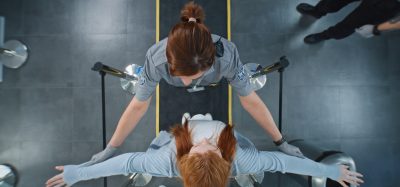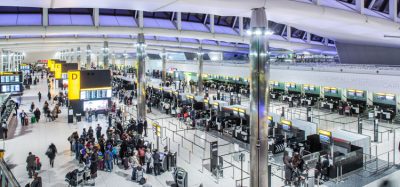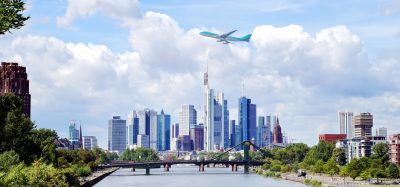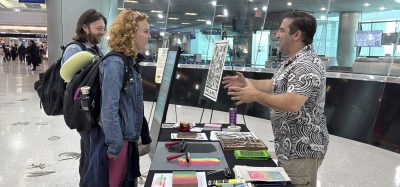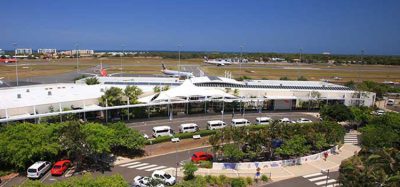V4+ Airport Association: Woman Innovation Days (WIND) 2024
Posted: 6 August 2024 | Emily Budgen | No comments yet
International Airport Review had the pleasure of being a media partner of V4+ Airports’ WIND Conference. Editorial Assistant, Emily Budgen, attended the conference in Slovenia and gives her report.
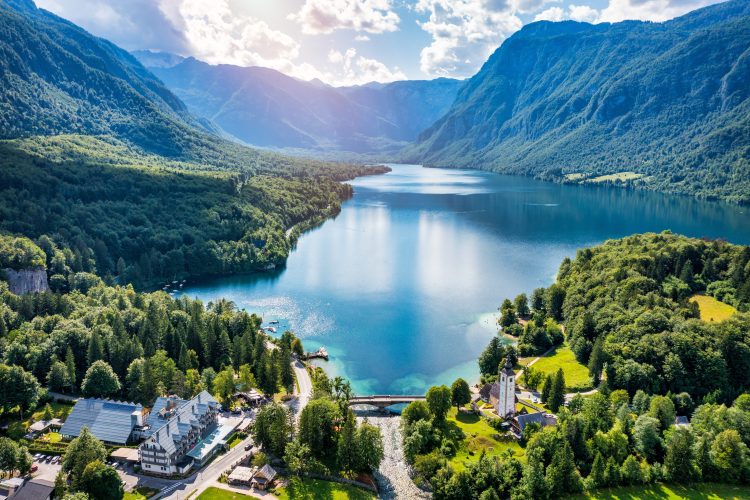

Held amid the beautiful surroundings of Lake Bohinj in Slovenia, delegates at V4+ Airport’s Woman Innovation Days (WIND) summit were able to hear from a variety of experts, through panels, presentations and workshops.
V4+ Airport were determined to make this conference memorable. Instead of the conventional networking in a conference room, attendees were able to choose a ‘socialising’ option for the first afternoon. While some chose to learn the regional cuisine through a local cookery class, I decided to get my trainers on and chose the guided hike option. This was not only a great way to see the ethereal surroundings of Lake Bohinj, which, thanks to the weather conditions, was encircled in a delicate mist, but also allowed me to meet delegates from a variety of European airports. Here, I was able to find out more about my fellow guests, learning of their individual routes into the airport and aviation industry, and what on the agenda appealed to them the most.
The focus on Triglav National Park did not conclude there, however. Delegates were allowed to attend a short boat trip around the lake before dinner. In addition to being able to see the natural beauty of the Julian Alps, here I learned local legends and myths about the mountains alongside fellow delegates.
Prioritising sustainability with tourism
The next morning, after a relaxing yoga session (yes, my usual conference wardrobe was pretty much left at home!), delegates filed into the grotto-like conference room of the newly renovated Hotel Bohinj.
First up on the agenda was a welcome address by the event organisers, laying out the themes for the rest of the conference. This was shortly followed by a presentation from the Slovenian Tourist Board. Here, delegates were introduced to the importance of sustainability in Slovenia’s tourism offerings, including the need for sustainable transport and accommodation.
Slovenia is considered the ‘first green country’, due to its many trees and forest areas. Even though this is a great attraction for many tourists and visitors, boosting the local economy of Slovenia, the importance of having sustainable and eco-friendly transport routes and accommodation is clear. The Slovenian Tourist Board now advocates for responsible and safe tourism, encouraging direction in the climate emergency and collaboration between airports and airlines.
This was a perfect prelude to the first panel discussion, ‘The airport as part of a sustainable journey.’ Overseeing the discussion was MICE Expert, Grazyna Grot-Duziak, introducing guests Julie Reeves, from technology and software provider SITA, Senior Planning Manager at Mace, Natalia Roj, as well as Fredi Fontanot (Director at Slovenian Convention Bureau) and Dina Drakulic (Sales Manager CEE/SEE at Falkensteiner Hotels).
This larger panel provided insight into the start of the airport ecosystem, as well as looking at how the tourism/accommodation industry can collaborate with the transport industry to ensure sustainable and seamless practice. Starting with Julie Reeves’ excellent presentation on the new and expanding role of technology in the airport sphere, the audience were asked to contextualise the role of the airport over the last century. Starting off as simple hangers and warehouses in the early part of the 20th century, airports are now sprawling enterprises, offering customers more than a simple A to B function. It is therefore obvious that traditional practices are under scrutiny in a modern, optimising age. Ticketing and baggage collection systems were SITA’s case studies, while Salzburg Airport’s Claudia Typelt looked at the changing landscape of the airport environment.
Innovative retail brands
Following this opening panel, there was a unique case study presentation from Mokosh Cosmetics. Known as Mokann Cosmetics in the UK, the attendees were able to hear from the founder and co-owner Anna Rutkowska-Didiuk. Positioning the airport industry as an alternative retail space, Anna started her presentation with the beginnings of her company, her vision for a cosmetic brand using only natural ingredients, and reasoning behind the Mokosh/Mokann label; it’s named after the Slavic goddess of earth, fertility and water. While the brand has been successful in its native Poland as well as in the UK, airport retail could provide a perfect opportunity for the brand to expand in a luxury market.
This case study was contextualised with the premise of non-aeronautical revenue. While this could fall under the realm of passenger experience, it also linked perfectly to the previous discussion on airport environments; what should and shouldn’t be included in airports and how brands can attract potential customers.
The future of the airport industry workforce
The case study was followed by a workshop, examining how the industry can become a training centre for the next generation. Two voices on the panel offered different approaches. Dr Roxani Athousaki, the Assistant Professor and Interim Course Director at Coventry University, Wroclaw, and Aleksandra Kapela, an aviation Psychologist.
During the discussion, both looked at the future of the airport industry workforce. Dr Athousaki focused on attracting and training the next generation of those in the industry, noting the different skillsets both Gen Z and Gen Alpha possess. A key message of her presentation, however, was the need for the industry to start investing and reaching out to students.
Aleksandra Kapela chose a slightly different approach, looking at how the industry can retain its workforce, and what incentives employers can introduce. Aleksandra then went on to hold an open discussion, asking the audience their experiences of working in the airport and aviation industry.
This provoked some interesting responses, some offered advice, how they implement a sense of scrutiny to their work and the importance of adaptation, others shared both positive and negative experiences while some took it as a point of personal reflection. An overarching theme of the discussion, nonetheless, was that a lot of the topics and challenges were shared by most if not all.
Shared experiences
This discussion concluded the conference portion of the summit. That evening, guests attended a traditional Slovenian meal in Stara Fuzina. This allowed further discussion of the points raised in the conference. Some attendees shared their experiences of joining the sector, noting changes such as digitalisation and the need for sustainability over recent years, while others talked about the changing passenger demographic. The needs and wants of Gen Z passengers are different to those of their parents and grandparents, they have a tendency to favour technology in their experiences and emphasise the importance of sustainable practices for their journeys. This time also allowed for some speculation over the next decade. Sustainability was considered a given, with the European Union’s ‘Fit for 55’ scheme and the net zero promise by 2050, but how this may affect the customer experience was less certain; is sustainability considered a necessity in customer choice or is it a “nice-to-have?” Hopefully, in the next decade, it will be a given for all airport guests.
Before returning home, there was one final networking activity planned: Participants had the choice between an alpine cycle ride or a tour of the regional flora. Opting for a gentle stroll around the mountains, I chose the latter, where the group were lucky to have a fantastic guide, Maja, who showed us the local flowers and explained some of the medicinal properties – a perfect conclusion to a unique and informative event.
More Like This
In the hotseat: Claire Waghorn, Christchurch International Airport
Tallinn Airport’s new generation security screening equipment makes the passenger journey more convenient
Oman Airports: Aerohacking a way to a more innovative future
Join our free webinar: Transforming Airport Security – Innovation, Impact, and the Passenger Experience
The landscape of airport security is undergoing a profound transformation, driven by evolving threats, technology, and passenger expectations. This webinar focuses on how AtkinsRéalis has been transforming security processes at some of the world’s busiest airports with smarter, more adaptive solutions.
Date: 4 Nov | Time: 14:00 GMT
REGISTER NOW TO SECURE YOUR SPOT
Can’t attend live? No worries – register to receive the recording post-event.
Related topics
Conferences and events, Data, Emissions, Engineering, Equity, Diversity & Inclusion (EDI), Non-aeronautical revenue, Passenger experience and seamless travel, Passenger volumes, Retail, Social responsibility, Sustainability, Sustainable development
Related organisations
Coventry University Wroclaw, Falkensteiner Hotels, Hotel Bohinj, Mace, SITA, Slovenian Convention Bureau, Slovenian Tourist Board, V4+ Airport Association



